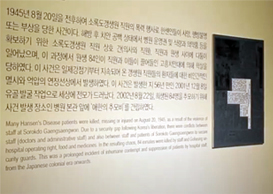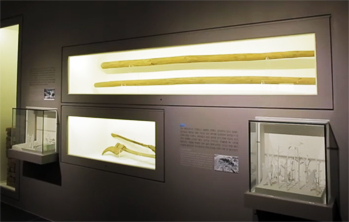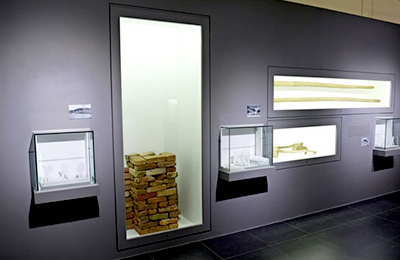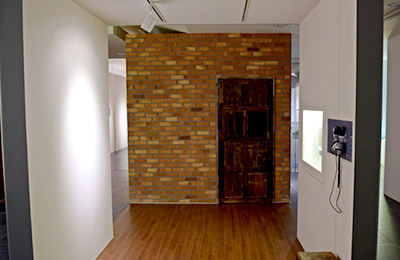Human Rights
Permanent Exhibition is displayed in the Centennial Hall on the second floor of the Museum.
It is composed of six different zones by theme: Hansen’s Disease, Human Rights, Space Transition, Life, Sorokdo National Hospital, and Friends. Various artifacts and materials such as artifacts used by Hansen’s disease patients (8 types, 14 items including a personal knife used for self-treatment), which are designated as Registered Cultural Heritage No. 663, are displayed to help you understand the history of Sorokdo and Hansen’s disease and sympathize with the life of patients and the value of human rights.
Countless cases of human rights abuse happened in Sorokdo.


Starvation, forced labor, incarceration, abuse, forced sterilization and abortion, and slaughter all began during the Japanese Colonial Period and things did not turn better for long even after liberation.
The history of human rights violation in Sorokdo is a tragic story we should not forget and silently points to the direction our society should be heading.
Exhibits & Collections
-
 Bricks
BricksThese bricks are one of the items that symbolize Sorokdo. Building a brick factory was the first thing the Japanese authority did to promote expansion projects that were carried out in 1933.
Red bricks were produced by extracting soil from Sorokdo and baking bricks at the kiln located in the place where the statue of the Virgin Mary stands now. Hansen’s disease patients were forced to do all the works.
Bricks made by patients in the grim colony reflect their painful stories and were used to build architectures in Sorokdo.
-
 Detention Ward
Detention WardThis is a Room of Wail that reenacts some parts of the detention ward in a reduced size. The detention ward was built in 1935 with 15 small rooms and had tall brick wall.
It was a site of administrative punishment where patients were subject to brutal abuse, including incarceration, starvation, and physical punishment, as the director of the hospital had the right to punish and confine them.
The Japanese authority managed and controlled Sorokdo as if it was a small independent country.
The detention ward was operated until 1974 by a patient organization under the supervision of hospital administrators. It was later used as a living space for a while and currently remains in front of the Central Park with the autopsy room.A poem inscribed in the front wall indicates the pain and resentment of an inmate who was confined in the detention ward.
The left side of the wall used to be covered with scrawls and scribbles of the confined inmates, although they are not recognizable now. A writing titled Escape inscribed in the wall reveals the harsh reality of Sorokdo.